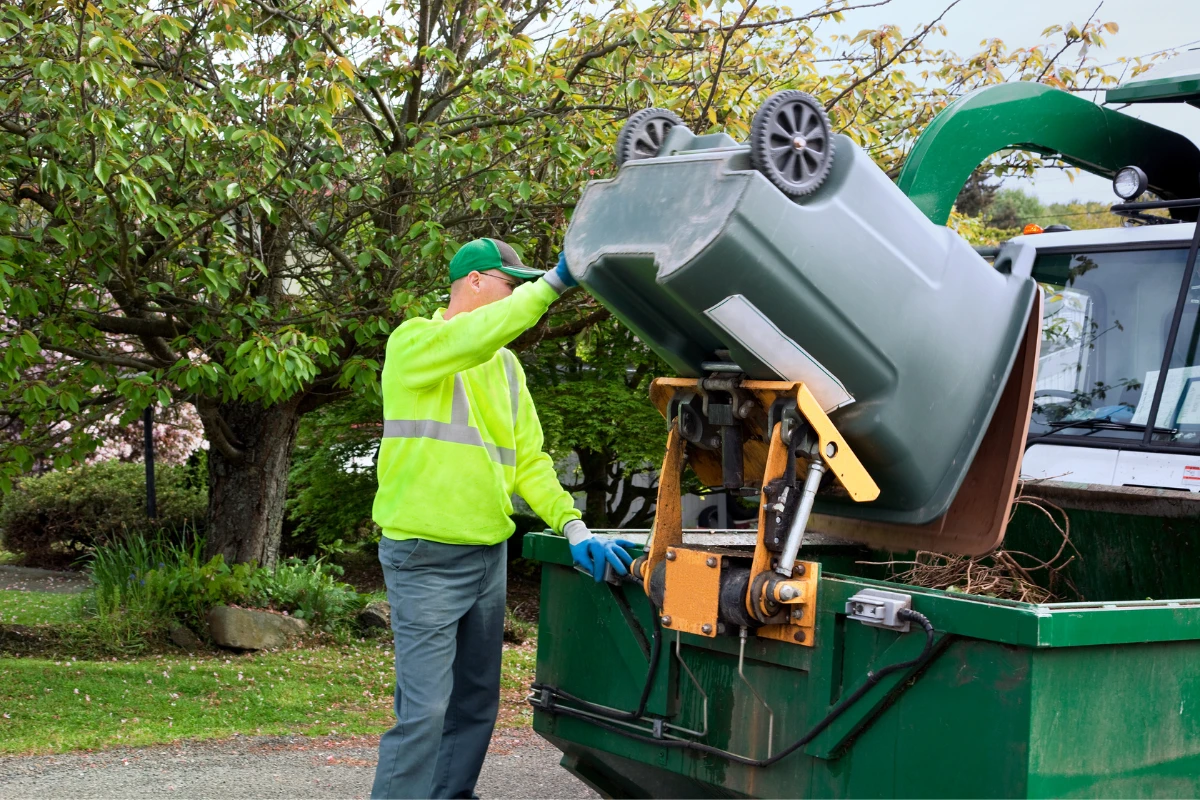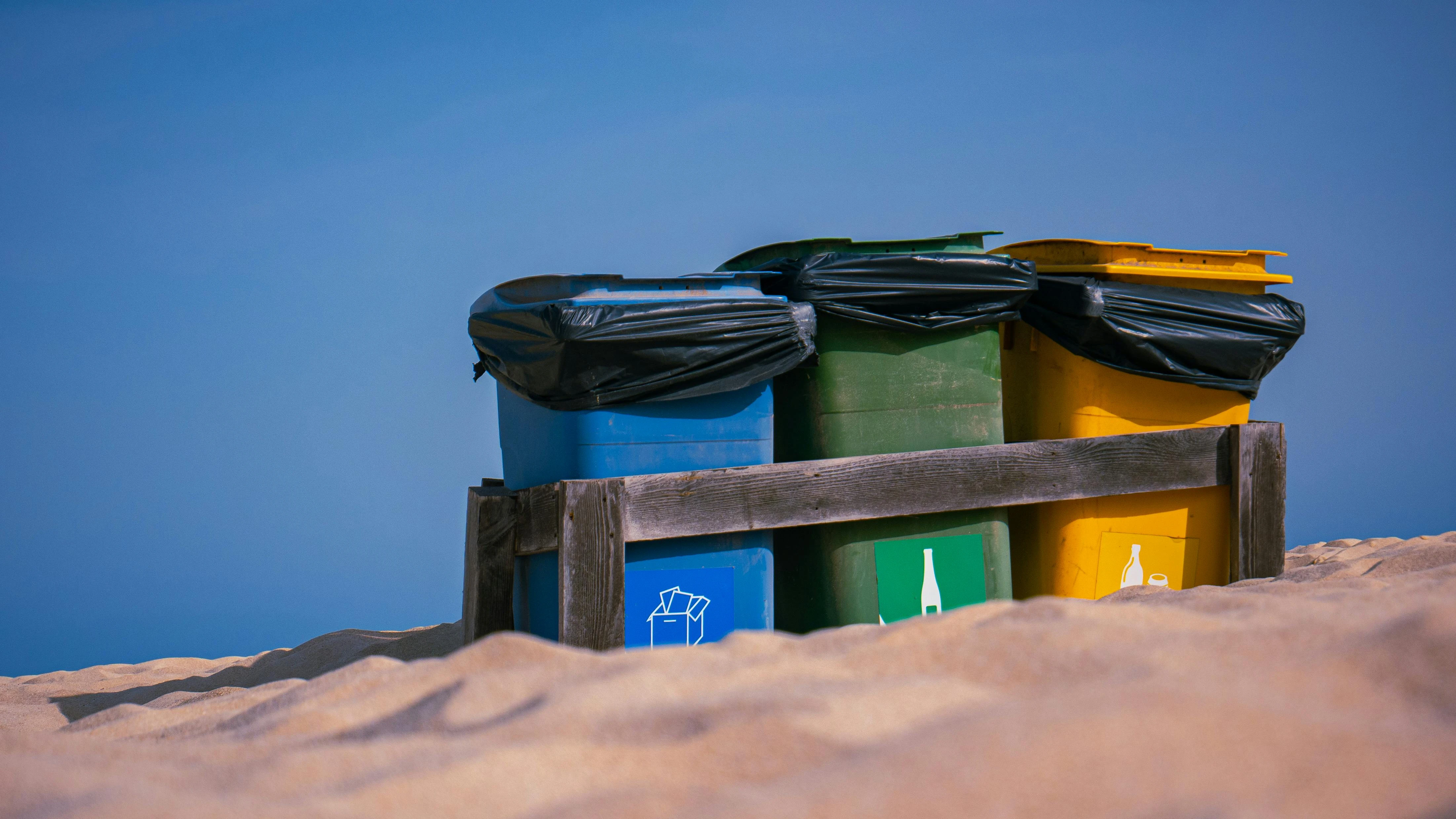How to Sort Waste at Home: A Practical Guide for Your Home

Waste sorting is becoming an increasingly important topic in Estonian homes, especially considering the new requirements and regulations that will come into force in 2025 and beyond. Proper sorting is not only an environmentally friendly activity, but also a legally required obligation. In this article, we will look at how to organize this at home simply and efficiently.
Why is waste sorting particularly important in 2025+ years?
Starting from 2025, Estonia must recycle at least 55% of household waste according to EU targets, which will increase to 60% by 2030 and 65% by 2035. Currently, we recycle less than a third of household waste, so everyone's contribution is needed.
Additionally, this means that municipalities that fail to meet recycling targets may face fines calculated for each ton of waste not recycled. These costs may eventually reach consumers through higher waste management fees.
In Estonia, we follow the waste hierarchy: first avoid waste generation, then reuse things, then recycle, and only in the last resort landfill, which is also explained in the waste reduction guide.
What types of waste must be sorted in 2025+ years?
The most important waste categories:
Biowaste – food waste, household paper, plant material
Packaging waste – plastic, metal, glass, cardboard packages
Paper and cardboard – newspapers, magazines, cardboard boxes
Glass – jars, bottles (without removing the cap)
Electronic waste – small electrical appliances, cables, batteries
Hazardous waste – paints, chemicals, medicines
Textiles (from 2025) – clothes, household textiles, fabrics
Mixed household waste – everything that cannot be sorted otherwise
An important update is the separate collection of textile waste, which became mandatory from January 2025. All Estonian homes need to start taking this into account.
How to organize sorting stations at home?
In an apartment
In an apartment, waste sorting needs to be planned cleverly so that it takes up as little space as possible while remaining convenient to use.
In the kitchen:
Compact biowaste container near the sink
Separate trash can or bag for packaging
Space for paper and cardboard in a kitchen corner or hallway
In the bathroom:
Small container for hygiene products
Space for expired medicines (until taken to a collection point)
In the hallway or storage area:
Larger collection area for newspapers/magazines
Space for electronic waste
Textile waste bag
It is now easier to dispose of small electronic waste, as Estonian Electronics Waste has opened electronic waste collection points in shopping centers. You can take broken chargers, phones, small kitchen appliances and batteries there, making the handling of electronic waste significantly more convenient.
In a detached house
In a detached house, there is usually more space, which allows for a more efficient sorting system.
Outside or in the garage:
Compost bin for biowaste
Larger trash containers for different types of waste
Separate area for larger waste items (old furniture, construction waste)
In the kitchen and living room – the same system as in an apartment
For a house, composting options are always helpful, which reduces the amount of biowaste. The advantage of home composting is that you can produce quality soil for your garden while reducing waste collection costs.
Useful tips for proper sorting
For packaging
Packaging sorting requires some attention to make the material suitable for recycling:

Rinse packaging lightly – dirty packaging reduces recycling efficiency
Separate different materials (for example, remove foil lid from yogurt container)
Reduce space – compress packaging so it takes up less room
Paper and cardboard
There are some simple rules in paper and cardboard recycling:
Keep dry – wet paper is not suitable for recycling
Remove tape and other additives
Fold larger cardboard boxes
Biowaste
Proper handling of biowaste significantly reduces the amount of mixed household waste:
Use a trash can lined with a biodegradable bag
Empty regularly (especially in summer) to avoid unpleasant odors
Do not put non-biodegradable items in the biowaste container (for example, plastic tea bags)
Electronics and hazardous waste
Proper handling of this waste is especially important for environmental protection:
Collect these separately and take to a collection point
Never throw into mixed household waste
Take batteries and accumulators to special collection boxes in stores
Sorting in apartment buildings
Apartment buildings usually have shared containers for different types of waste. Starting from 2025, there is discussion about mandatory installation of separate containers for glass, paper and cardboard in all densely populated areas.

Organizational tips
Good cooperation with neighbors ensures efficient waste management:
Familiarize yourself with your apartment association's rules – each building may have its own nuances
Use labeled containers – to ensure sorting efficiency
Inform neighbors – share information about new requirements and best practices
If you are already used to minimalist living and home organization, as recommended in the minimalist lifestyle article, organizing waste sorting is also much easier.
Technology to help with sorting
Technological development offers new opportunities for waste sorting. Estonia is developing a digital real-time monitoring system with GPS trackers on waste collection vehicles to track waste sorting behavior.
Smart solutions for home sorting
Technology makes sorting easier:
Apps that help determine where different types of waste belong
Smart trash cans that help with sorting
Home composters that process biowaste
Common mistakes and how to avoid them
Some common mistakes are often made when sorting waste that should be deliberately avoided:
Improper handling of plastic packaging – dirty or multi-material packaging often ends up in the wrong waste category
Improper handling of electronic waste – over 2800 tons of electronic waste ends up in household waste, even though there are approximately 4-5 kg of unused electronic devices in each home
Improper handling of textile waste – textile waste is currently collected in Estonia through 160 collection points, but starting from 2025, separate collection becomes mandatory
Sorting and household chores
Organizing efficient waste sorting can be easier as part of your daily and seasonal household work routine. For example, during autumn household chores, it is good to review your waste sorting system and, if necessary, repair or supplement it.
You can also reduce waste with ideas for improving home comfort, where focusing on quality and long-lasting solutions also helps reduce the amount of waste generated.
Why is waste sorting important?
Waste sorting is important for several reasons:
Environmental protection – reduces pollution and resource waste
Legal requirements – many sorting practices are mandatory from 2025 onwards
Financial savings – handling unsorted waste becomes more expensive
Resource recycling – many materials are valuable raw materials for new products
How to get started?
If you want to create an efficient waste sorting system in your home, start with these steps:
Familiarize yourself with the rules in your area – your local municipality determines specific waste management requirements
Get the necessary containers – invest in quality sorting tools
Involve the whole family – successful sorting requires the contribution of all family members
Start gradually – do not try to change everything at once, start with basic waste types
Waste sorting is an investment in our shared future. The new rules for 2025+ years may seem complicated at first, but with a well-thought-out home system, it will soon become a natural part of everyday life.
If you are looking for a new home, think ahead about how to build a sorting system there – for both an apartment and a house, convenient waste management is one of the important factors affecting the quality of everyday life.
Search
Keywords
Most read articles
- Price per Square Meter of Apartments in Tallinn in 2025

- Estonian Apartment Prices and Market Expectations in 2025

- Notary Fee and State Fee – Who Pays and How Much?

- The Apartment Market in Estonia's Largest Cities in 2025

- Five-year transition period ended: nearly zero-energy building requirements extended to new small residential buildings
